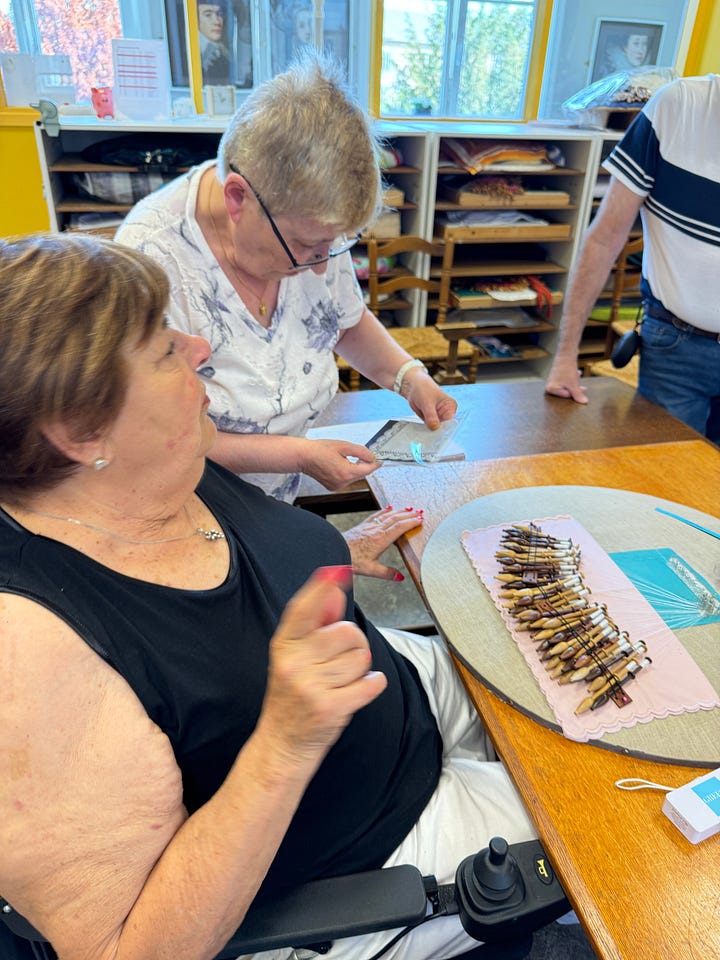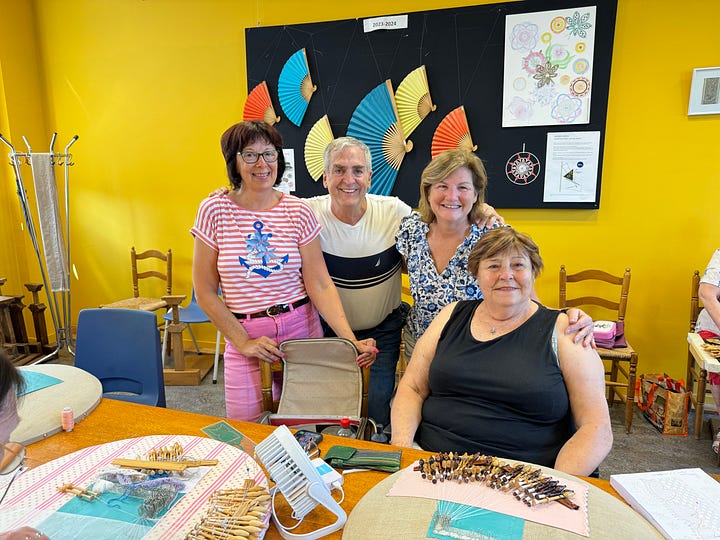Lace in Bruges, Belguim
Have you ever really looked at lace or thought about how it was made? I have done all sorts of needlework in my life but never actually thought about the process of making lace. Several years ago, we bought an intricate lace table cloth in Burano, Italy and the process was explained to us by one of the ladies in the shop. She had actually worked on the table cloth we purchased. She told us although Burano, which is a short water taxi or vaporatto ride from Venice, was a fishing village, its fame came from making lace for royalty in the 16th Century. This tradition has been passed down through generations and they still make complex lace patterns today. Each lady in the village specializes in a specific stitch of lace making or embroidery and the work (tablecloth, placemat, shirt, etc.) is passed around to another lady to add her “stitch” and pass on to the next person. So, when you buy an item of handmade lace, multiple ladies have added their specific handiwork, which in my opinion, makes it truly special.
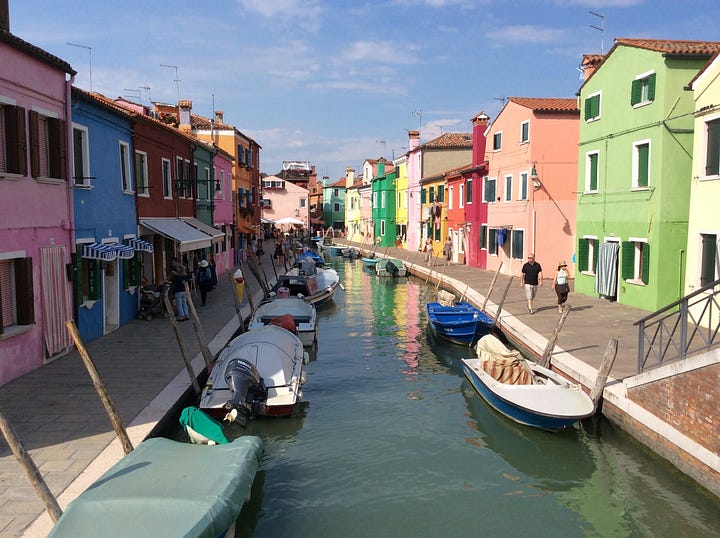
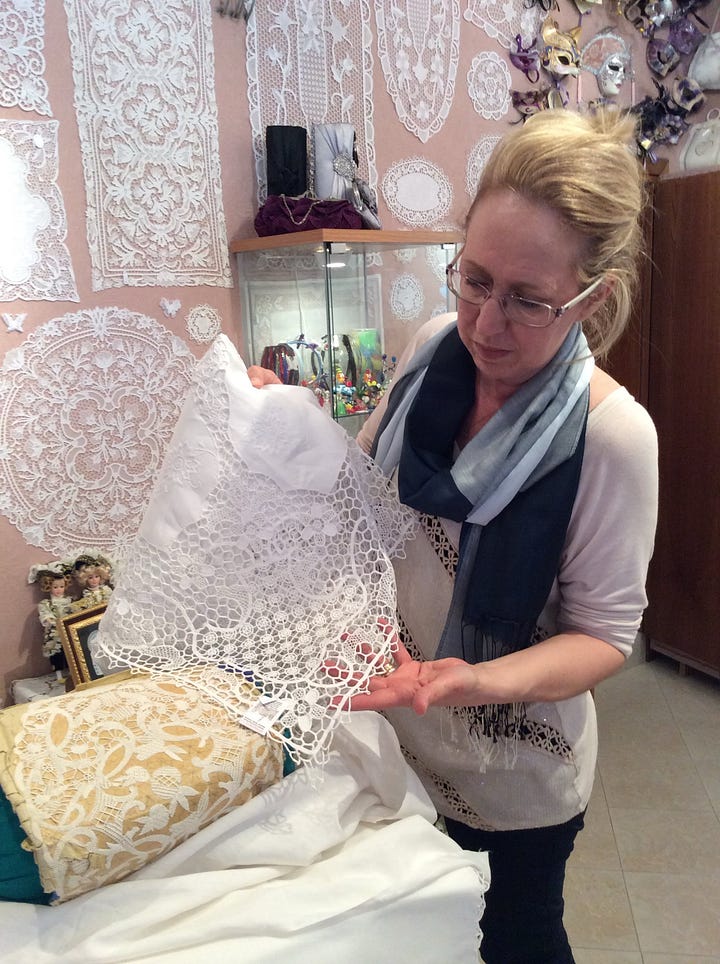
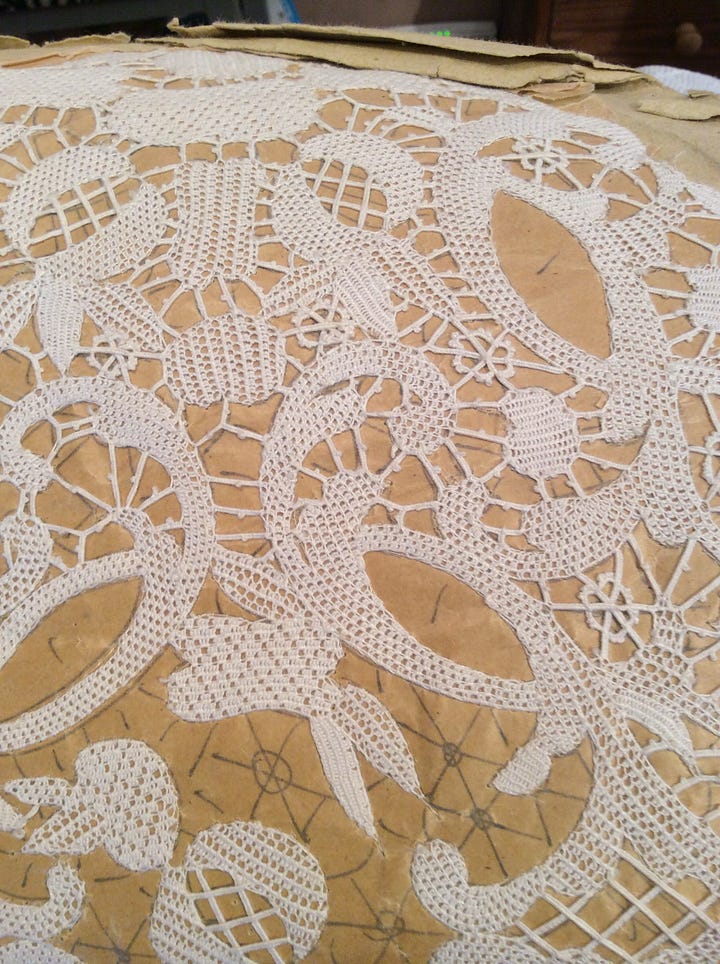
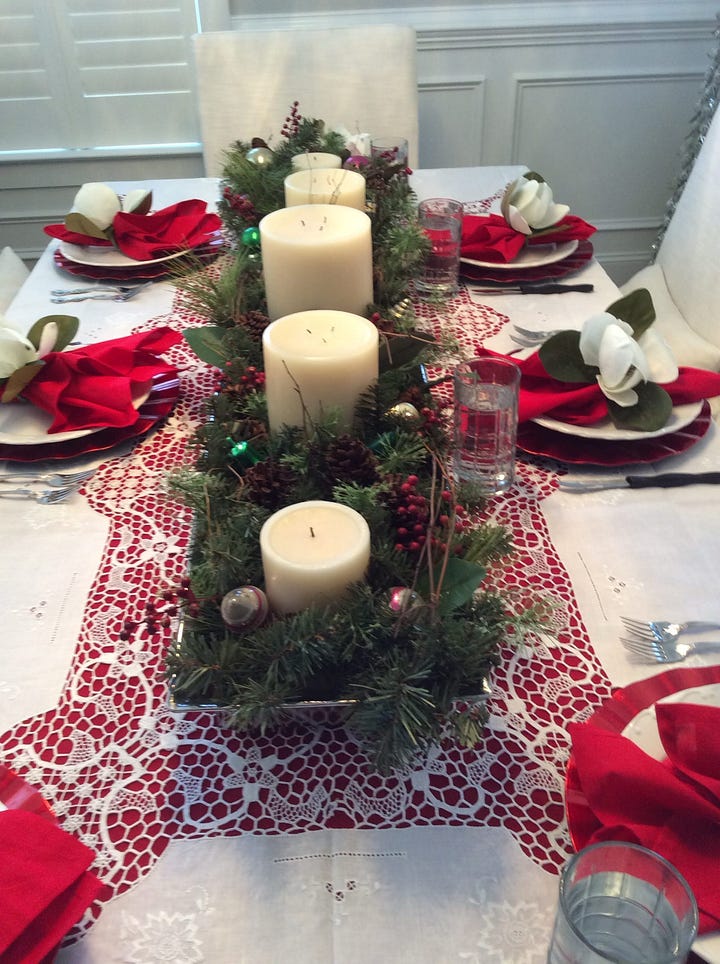
While the lady in Burano showed us the pattern and work in progress, we had not actually seen lace being made until we traveled to Bruges, Belgium a couple of years ago when a shop owner gave us a quick demonstration. She likened it to playing a piano. We couldn’t resist purchasing a few napkin sets and gifts for friends. This year when we returned to Bruges, we went into the same store and the shop clerk remembered us.
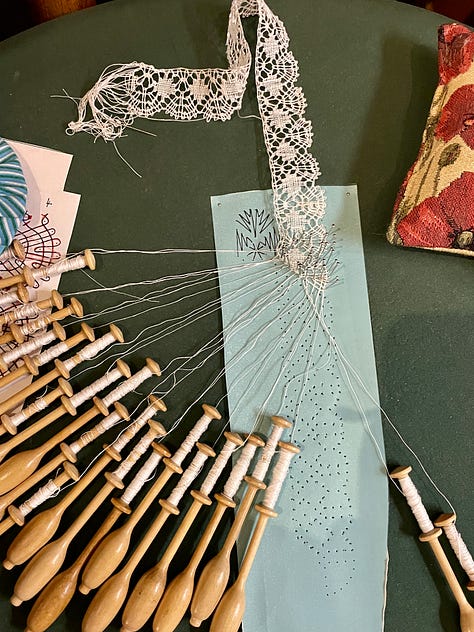
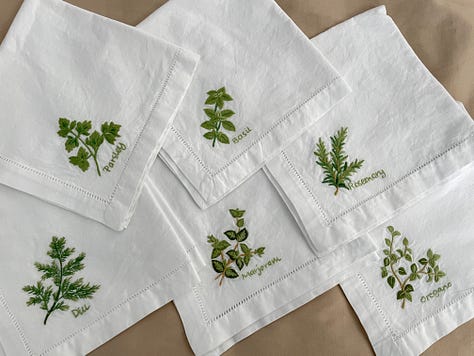
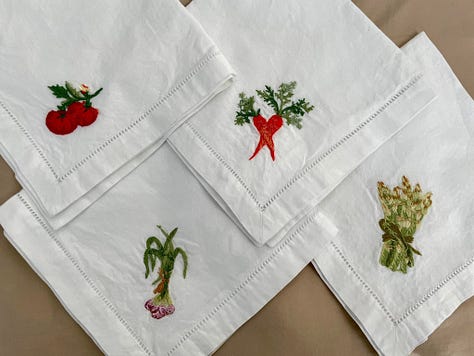
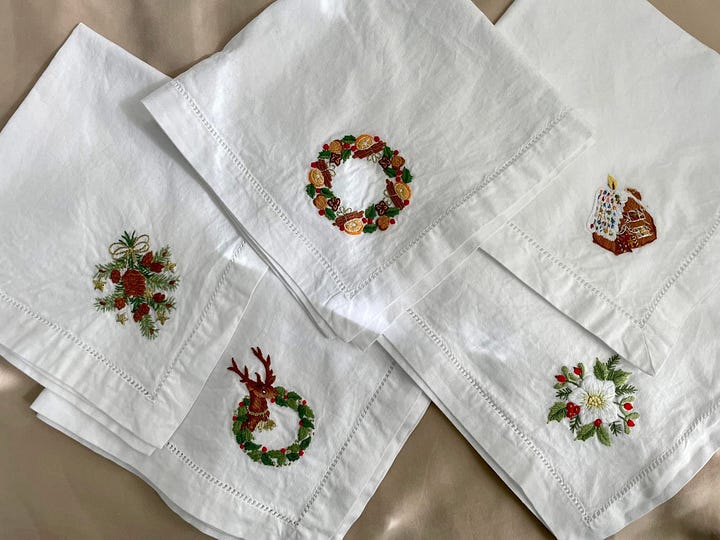
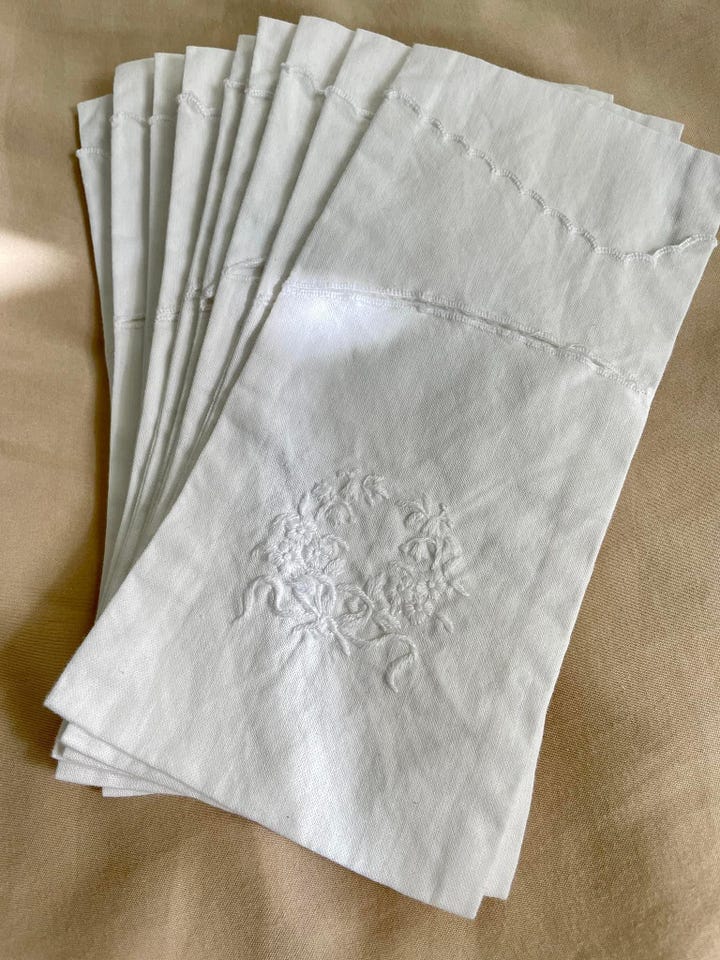
We tried to visit Lace Centre, the lace museum, in Bruges when we were there on that visit but once we arrived, we discovered it was closed for a national holiday. So, Lace Centre was a high priority for us this year. We arrived in the morning and marveled at the detailed lace displayed. We were informed that there would be a demonstration later in the afternoon so we purchased additional tickets to attend the demonstration.
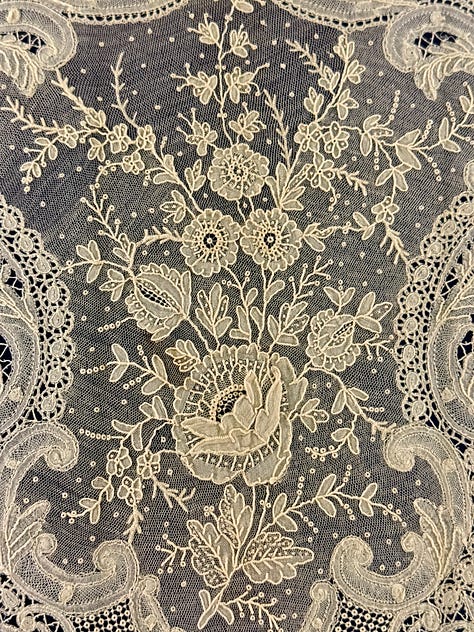
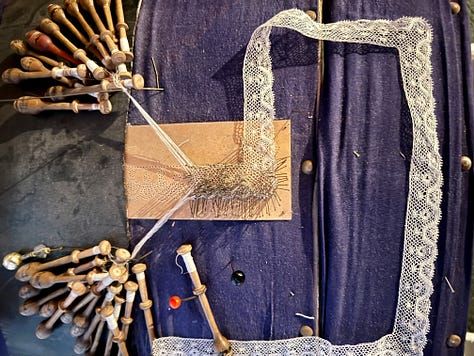
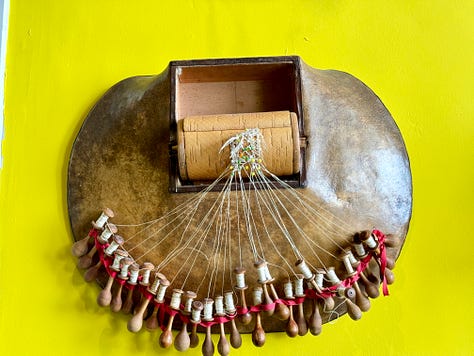
Since we had a little bit of time to kill prior to the demonstration, we walked by the windmills, sat in a park and ate our lunch, and visited the Adornes Estate, which is a magnificent property complete with its own chapel, until it was time to return to Lace Centre. I would highly recommend these sites when you’re in Bruges.
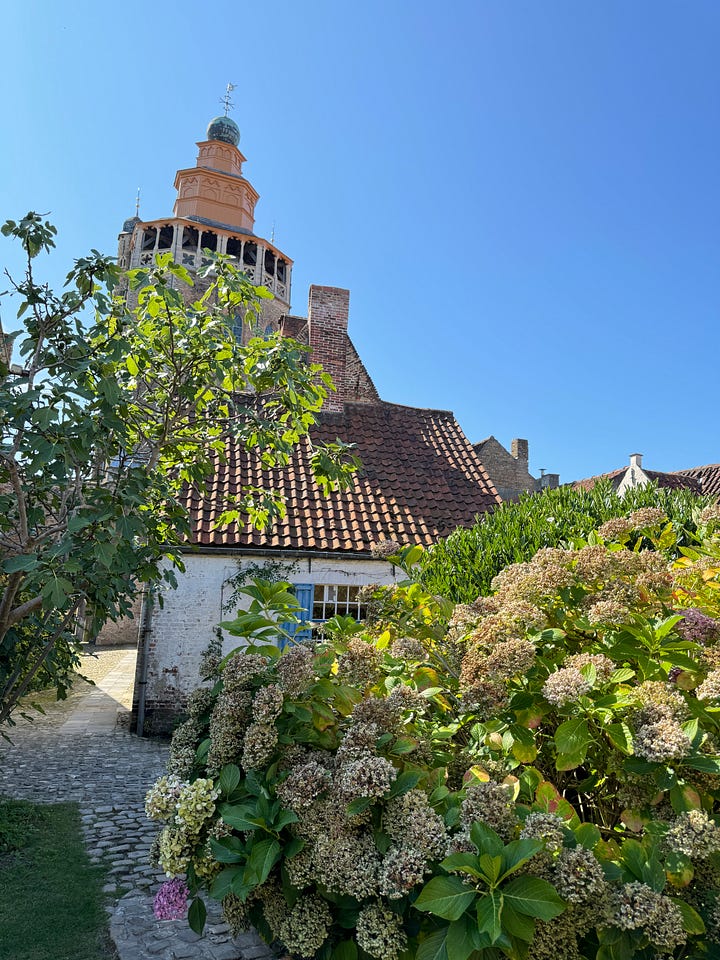
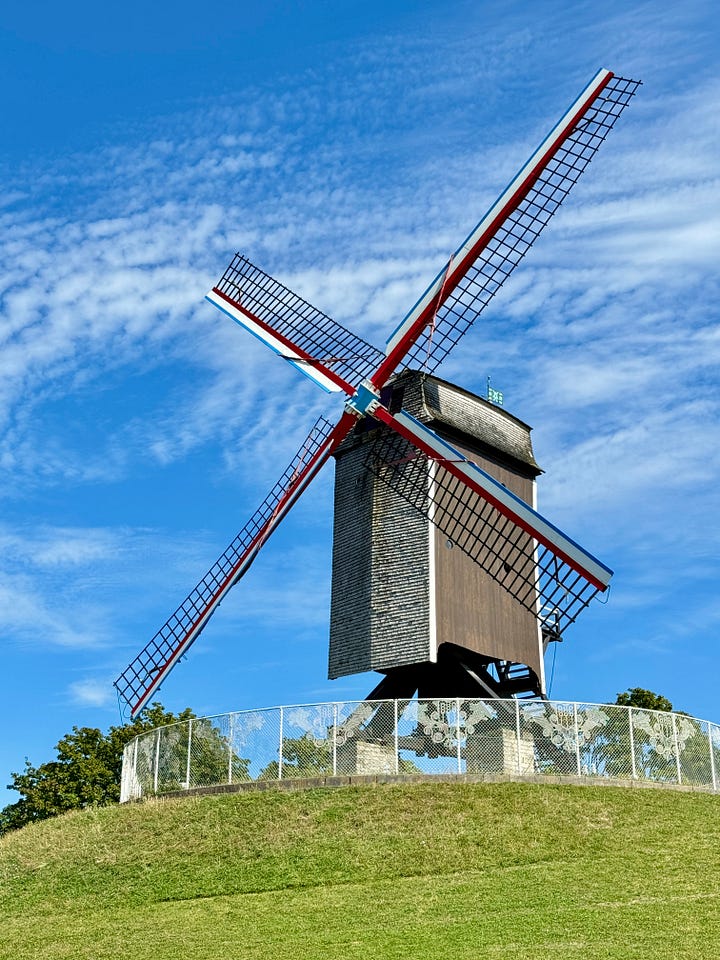
Once we returned back to the Lace Centre, we discovered it was not just a demonstration but the museum provided a room for people to come work on their lace making projects in the fellowship of others each afternoon. In essence, it was an old-fashioned sewing circle. Cubbies were provided for storage of supplies and the ladies were so happy we were there and to show us their work. The “lace ladies” told us that not many tourists venture out of the immediate city center, and they were very welcoming with us. All were anxious to demonstrate and show progression of patterns, how they determine the number of bobbins to use, where to place straight pins, how many knots to tie, and how to follow the technical pattern.
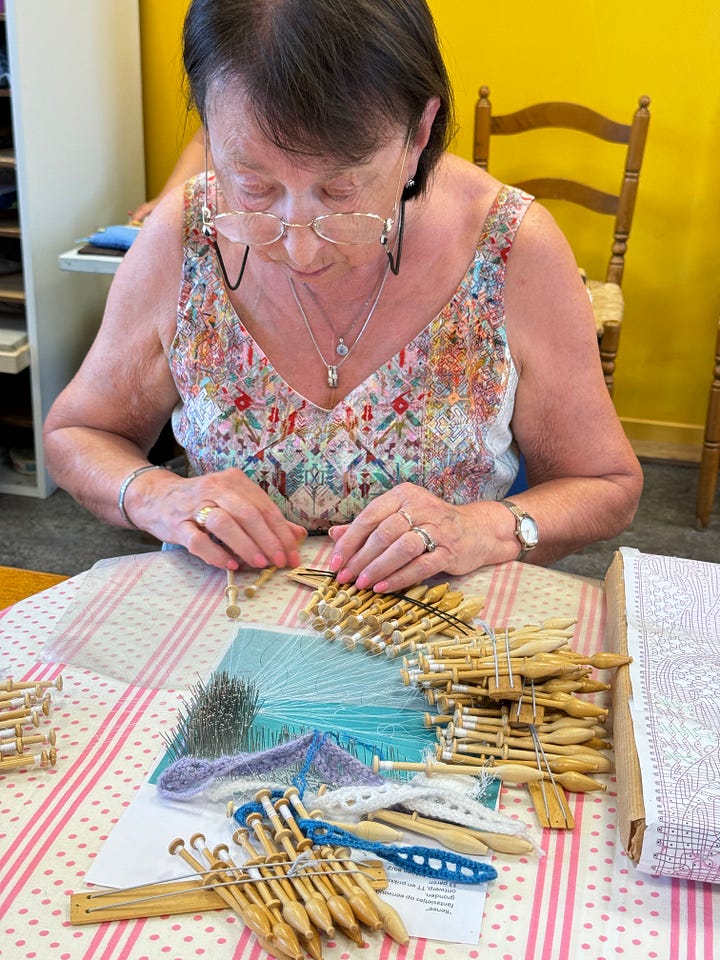
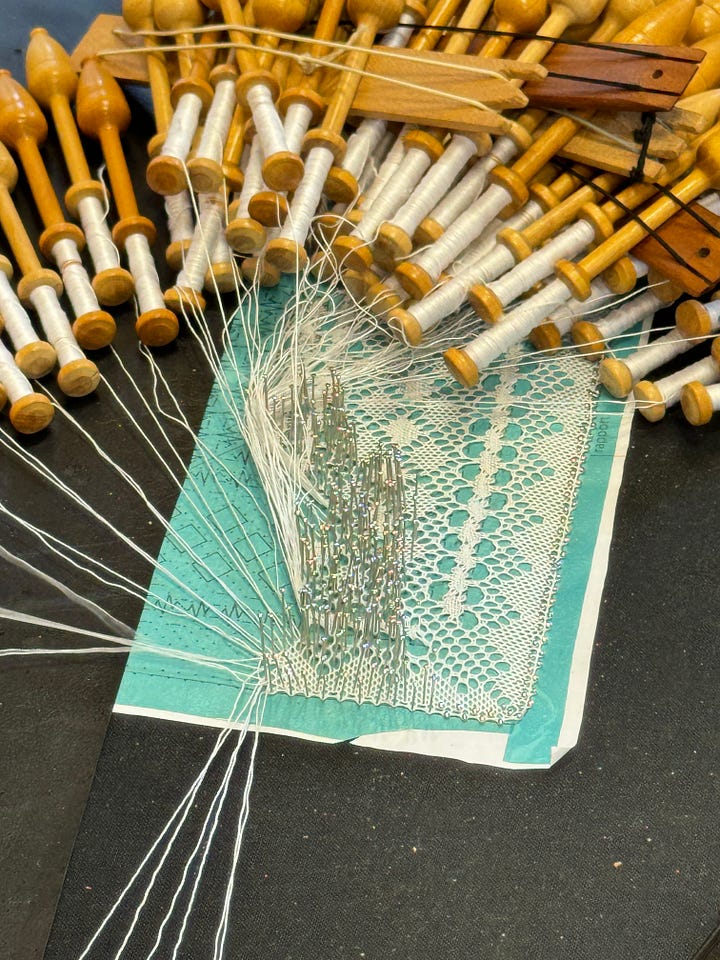
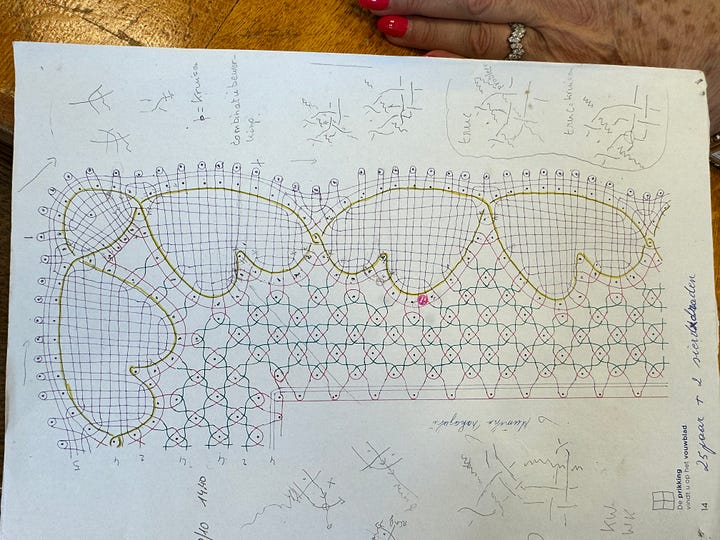
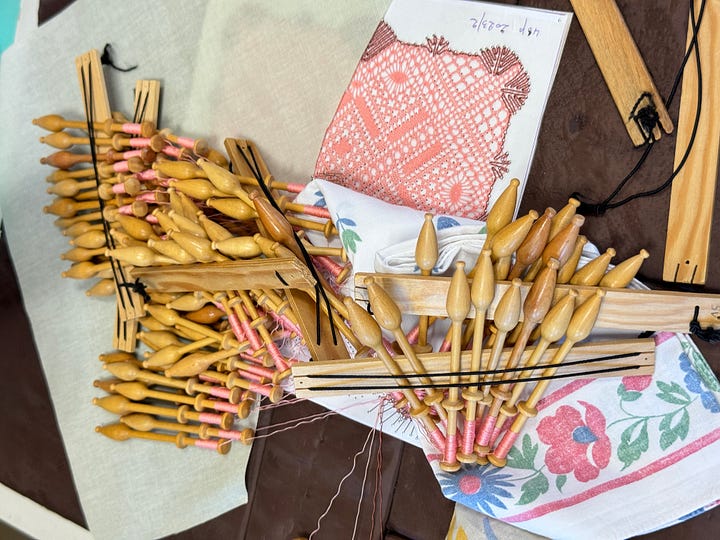
Fellowship was an undeniable part of the process. I asked if they had a schedule of when they were supposed to work in the museum. One lady laughed and said, “No, we just come when we want. I’ve been three days this week.” It was on a Wednesday when she told me this! Most do not sell their work. It is a hobby for them - one lady was making rose colored pillows to match her decor, another lady proudly showed me a lace cat she designed, others were just working on patterns they enjoyed. A museum docent was there to help anyone who ran into issues.
I don’t believe we can make lace now, but they assured us with practice and determination, we’d be able to accomplish it. I do know we had lots of laughs and made some new friends that day.
